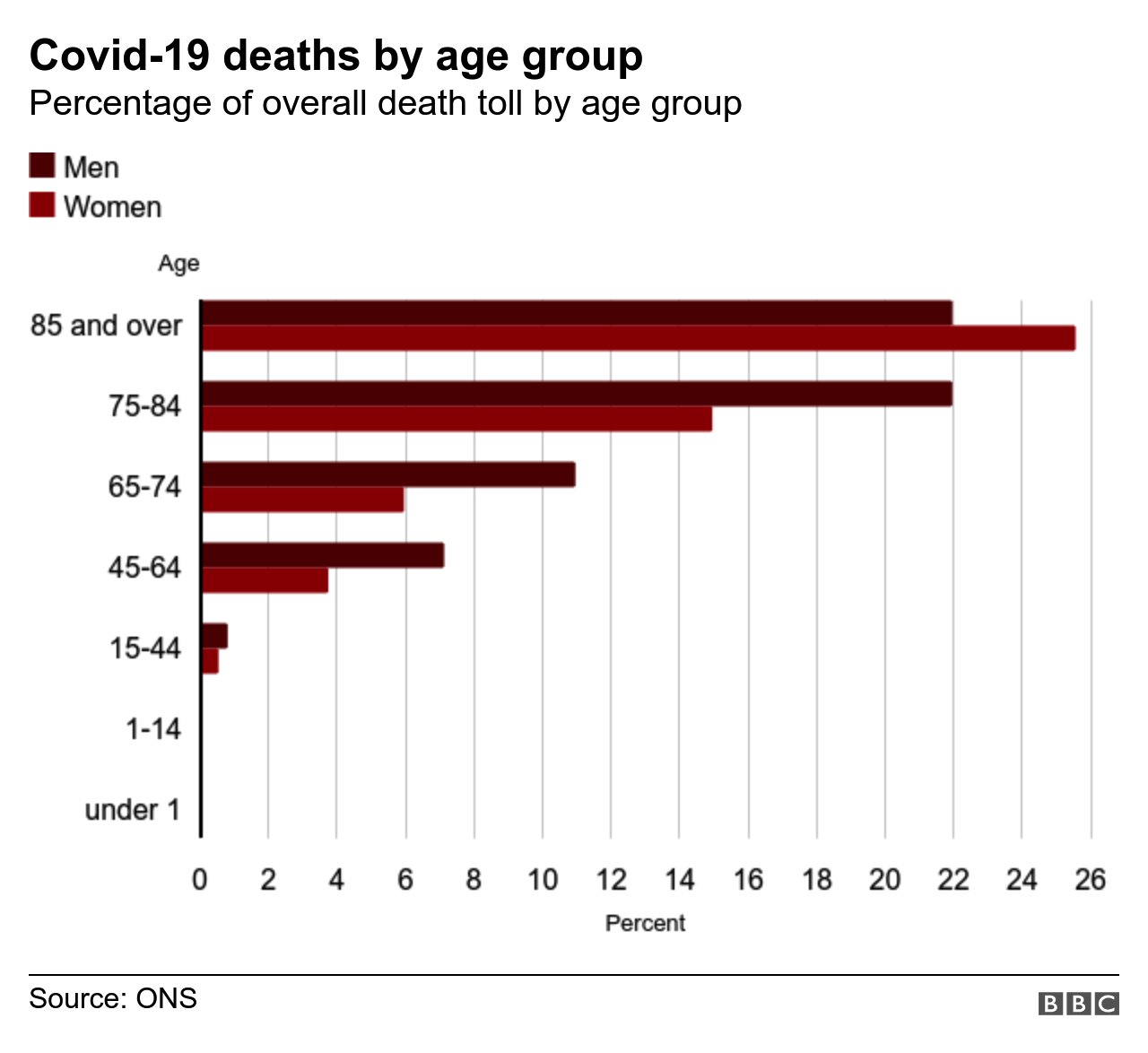Covid: How the UK reached 50,000 virus deaths
The UK has now seen more than 50,000 deaths linked to Covid-19, according to the government’s official figures.
It is a tragic milestone, which illustrates the impact the pandemic has had on the country. But on its own it does not tell the full story. Behind the figure, there’s a complex picture.
The deaths have come in waves
The majority of the deaths came in the spring as the virus took the UK by surprise.
Deaths rose rapidly in those early weeks of the pandemic, doubling ever four days at one point before peaking at 1,000 deaths a day in April.
It then fell as lockdown and other measures had an impact. At points during the summer, daily deaths were in the single figures before the virus rebounded.
Throughout the autumn, the number of deaths has been rising, albeit much more slowly than in the spring, with deaths doubling every two weeks or so at the moment.

With signs infection rates are slowing and the prospect of a vaccine on the horizon, there is hope the rising numbers will slow, perhaps eventually to almost a stop.
Deaths from other causes have gone up too
The government’s death count just looks at those who have died within 28 days of a positive test. But if you look at death records it is clear that more people have been dying overall during the pandemic than would be expected.
Up to the end of October, there were nearly 70,000 excess deaths.
Some of these were judged to be linked to Covid by doctors who filled in the death certificates – an absence of testing in the early days meant a number of Covid deaths were not recorded as such.
But some were what are known as indirect deaths. This includes deaths from other conditions such as heart disease because people did not get the treatment they needed.
Most of the deaths have been among older people
The average age of people who have died with Covid is above 80 with more than nine in 10 of the deaths among the over 65s, according to Office for National Statistics analyses of the pandemic.
Deaths among the under 45s have been low – only a few hundred have been seen, including six children under the age of 14.

The north of England has been badly hit
There are marked differences when you look at deaths by area.
There are a number of factors that have contributed to this from levels of infection to the age and health of the population.
People from deprived backgrounds and ethnic minority groups have died in greater numbers.

The international comparison
Whether you look at excess deaths or coronavirus deaths per head of population, the UK has seen one of the worst death tolls in the world.
The blame has at times been laid at the door of the government.
From the delay locking down, to the lack of testing in the early days and on-going struggling with contact tracing, a variety of factors have been put forward as to why the UK has seen so many deaths.
But the UK is not the only country to have struggled. Ministers in Spain, France and Italy have come in for heavy criticism too.

Ageing population has played a role
But putting aside the government’s record, the size and age of the UK’s population has also left us susceptible.
In fact, if you adjust the death rate to take into account the age and size of the population the number of deaths seen in 2020 has been high.
But it is not completely out of kilter with the death rate in the early years of the 21st century.

